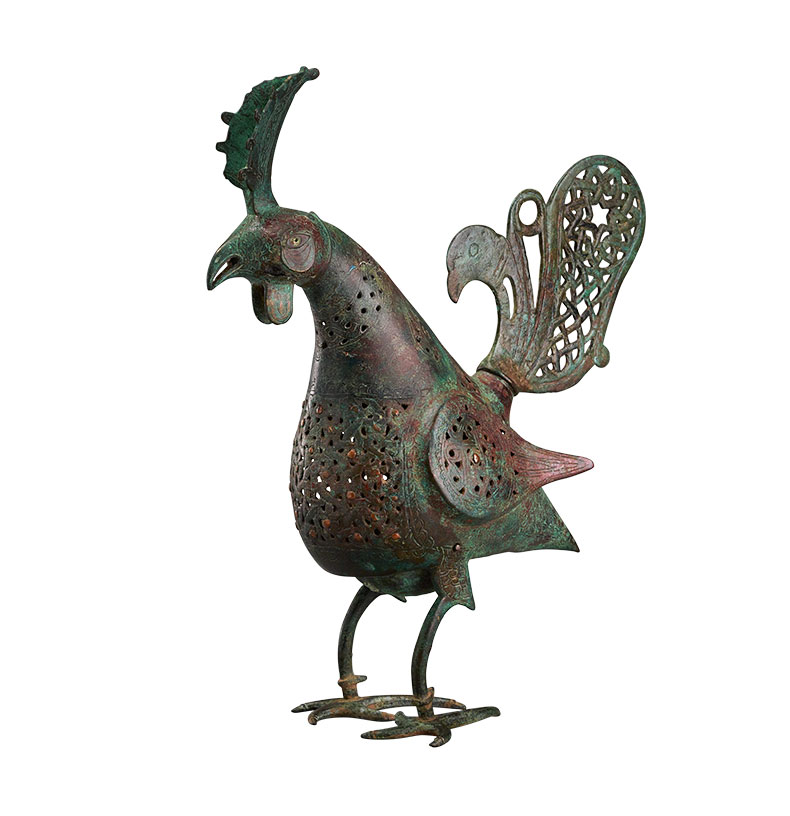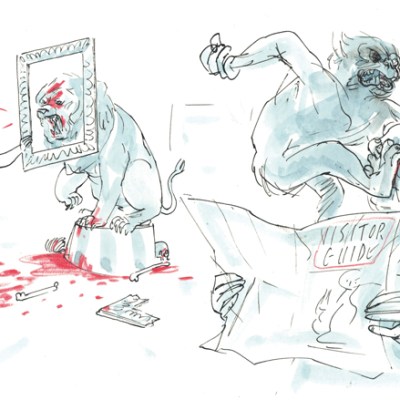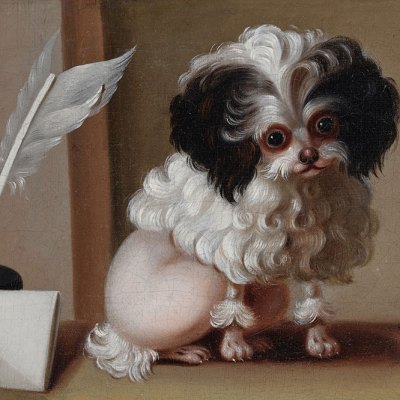 ‘Four things to see this week’ is sponsored by Bloomberg Connects, the free arts and culture app. Bloomberg Connects lets you access museums, galleries and cultural spaces around the world on demand. Download the app here to access digital guides and explore a variety of content.
‘Four things to see this week’ is sponsored by Bloomberg Connects, the free arts and culture app. Bloomberg Connects lets you access museums, galleries and cultural spaces around the world on demand. Download the app here to access digital guides and explore a variety of content.
Each week we bring you four of the most interesting objects from the world’s museums, galleries and art institutions, hand-picked to mark significant moments in the calendar.
From the weird and wonderful beasts of medieval manuscripts to the scene-stealing dogs in Renaissance genre paintings, animals have always played an important part in art history. In recent years the creatures themselves have taken centre stage, as in the German photographer Candida Höfer’s Zoological Garden series or in Joan Jonas’s drawings I Know Why They Left.
Animals have even been known to enter the odd gallery. While Damien Hirst’s poor tiger shark preserved in formaldehyde is perhaps the most memorable example, there have been more lively appearances – such as the moment Jannis Kounellis brought 12 horses into Galleria L’Attico in Rome in 1969, or the live-in coyote that starred in Joseph Beuys’s 1974 performance I Like America and America Likes Me.
This week, we celebrate the anniversary of the establishment of the Royal Society for the Prevention of Cruelty to Animals (RSPCA) in 1824, with a selection of objects for which we can safely assume no animals were harmed in the making.
Incense burner in the shape of a bird (11th–13th century), Iran. Aga Khan Museum, Toronto

1. Incense burner in the shape of a bird (11th–13th century)
Aga Khan Museum, Toronto
This characterful incense burner was made between the 11th and 13th centuries in Iran. The smoke would have risen up from the bird’s stomach and filtered through the many perforations in the metalwork. Click here to find out more on the Bloomberg Connects app.
The Monarch of the Glen (c. 1851), Edwin Landseer. National Galleries of Scotland

2. The Monarch of the Glen (c. 1851), Edwin Landseer
Scottish National Gallery, Edinburgh
Perhaps one of the most famous examples of animals in Western art, Landseer’s portrait of a stag has come to embody, for some, the very essence of the Scottish landscape and national pride. It has been widely reproduced as an image since its creation in the mid 19th century, first as a print and then, in the 20th century, against a ground of tartan on Walker’s shortbread tins. Click here to find out more.
Hedgehog (c. 1391–53 BC), Egypt, 18th Dynasty. The Cleveland Museum of Art

3. Hedgehog (c. 1391–53 BC)
Cleveland Museum of Art
For those who associate the hedgehog with genteel English gardens, it may come as a surprise to find one depicted in ancient Egyptian apotropaic statuary. It is thought that the Egyptians revered the animal’s ability to turn itself into a spiky ball and to resist snake venom, as well as the symbolism of self-renewal and resurrection signified by its hibernating period. Click here to find out more.
Pacopampa feline (1250 BC–1 AD), Peru. Museo Larco, Lima.

4. Pacopampa feline (1250 BC–1 AD)
Museo Larco, Lima
This stone carving comes from the Pacopampa temple in Peru’s northern highlands and is thought to represent a jaguar. For the Andeans, the animal was both a symbol of sunlight – because it roamed in the east – and of water, because the spots on its coat were associated with raindrops. Click here to find out more.
Download now
![]() ‘Four things to see this week’ is sponsored by Bloomberg Connects, the free arts and culture app. Bloomberg Connects lets you access museums, galleries and cultural spaces around the world on demand. Download the app here to access digital guides and explore a variety of content or scan the QR code.
‘Four things to see this week’ is sponsored by Bloomberg Connects, the free arts and culture app. Bloomberg Connects lets you access museums, galleries and cultural spaces around the world on demand. Download the app here to access digital guides and explore a variety of content or scan the QR code.



